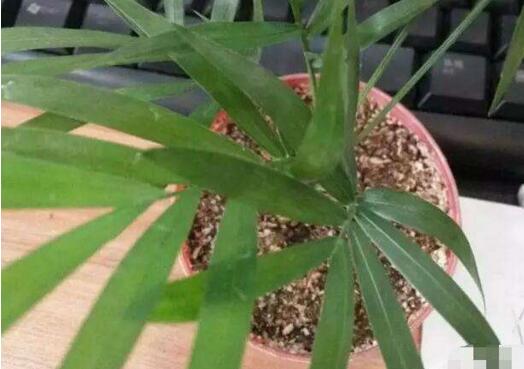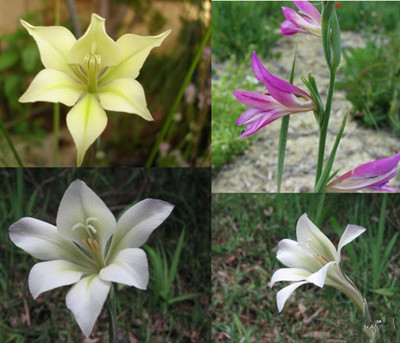The planting method of Chuanshanlong
Dioscorea zingiberensis alias Dioscorea zingiberensis, wild yam, string of ground dragon, is a common Chinese medicine, has the effect of relaxing muscles and promoting blood circulation, dispelling wind and relieving pain, is an important raw material for the synthesis of contraceptive, the market prospect is considerable. So how to plant the mountain dragon? Let's have a look with the editor.

1. Land selection and preparation
Mountain dragons are often wild in hillsides, forest margins, weeds and shrubs, and the requirements for soil are not strict, but it is appropriate to choose sandy loam or hillside land with loose and fertile soil and good drainage, followed by loam and clay loam, and sloping land can also be planted. The growth of Chuanshanlong is relatively large, so it is necessary to supply sufficient fertilizer when planting, and before planting, it should be combined with soil preparation, apply base fertilizer, base fertilizer is mainly organic fertilizer, spread it on the ground, plough it deeply and turn the fertilizer into the soil.
2. Sowing seeds
Before sowing, the seeds must be treated at low temperature in order to break the seed dormancy and improve the germination rate, so generally at the beginning of February, the seeds and fine sand are stirred and placed in an indoor environment below 10 degrees for 7-10 days and frozen in a pit. After Ching Ming Festival, you can sow seeds, adopt the method of strip sowing, trench the border by 10 cm apart, spread the seeds evenly into the ditch, cover 2 cm branches, water them after a little suppression, and often keep the soil moist until seedlings emerge. After watering, it can also be covered with grass to keep warm and moisturizing, and it can be removed when the seedlings emerge, about 5 centimeters of straw, and about 3 kilograms of seed per mu when sowing.
3. Colonization
Planting is carried out before sprouting in spring, generally using the method of ridge planting, the distance between ridges is 65 cm, and the distance between plants should be based on the number of years of cultivation. If the plant is planted for two years, the plant distance is about 15 cm, that is, the root segment is connected from end to end; for three years, the plant distance is about 20 cm, and the root segment head-tail distance is 5-10 cm. After planting, cover the soil 10-15 cm and water the roots once to facilitate the survival of the plant.
4. Field management
When the seedlings grow to more than 15 cm, it is necessary to wait for time for seedlings, the principle of interseedling is weak and strong, dense and sparse, and timely ploughing and weeding at the same time to promote root growth, so as to prevent weeds from seizing nutrients and growth space and affecting seedling growth. Weeding is carried out 2-3 times a year. After the seedlings should be fertilized once in time, 1000 kg of farm manure per mu should be applied, and the plant growth should be accelerated in the second and third years. At this time, topdressing should be done twice a year to ensure that the plants have sufficient nutrients to grow. When the seedlings grow to 20-30 cm, it is necessary to set up and draw vines in time to increase the permeability between plants and promote photosynthesis.
The above is the introduction of the planting method of Chuanshanlong. I hope it can help you. If you want to know more about it, please follow us.
- Prev

What if the leaves of loose-tailed sunflower turn yellow? eight simple ways to make the leaves green again.
Loose-tailed sunflower leaves yellowing is a very troublesome thing, not only affect the beauty but also endanger its health, then when we encounter loose-tailed sunflower leaves yellowing how to do? It is important to understand several common causes and solutions. What if the leaves of loose-tailed sunflower turn yellow? the editor found out after statistics.
- Next

Culture and Flower cultivation of Gladiolus
Gladiolus, also known as sword orchid, is not an orchid, but belongs to the bulbous plant of the duck tail family. Ecological habits: light-loving long-day plants, winter cultivation cloudy days to increase light, afraid of cold. The suitable growth temperature is 2025 degrees Celsius during the day and 1015 degrees Celsius at night. Through dormant bulbs
Related
- Fuxing push coffee new agricultural production and marketing class: lack of small-scale processing plants
- Jujube rice field leisure farm deep ploughing Yilan for five years to create a space for organic food and play
- Nongyu Farm-A trial of organic papaya for brave women with advanced technology
- Four points for attention in the prevention and control of diseases and insect pests of edible fungi
- How to add nutrient solution to Edible Fungi
- Is there any good way to control edible fungus mites?
- Open Inoculation Technology of Edible Fungi
- Is there any clever way to use fertilizer for edible fungus in winter?
- What agents are used to kill the pathogens of edible fungi in the mushroom shed?
- Rapid drying of Edible Fungi

